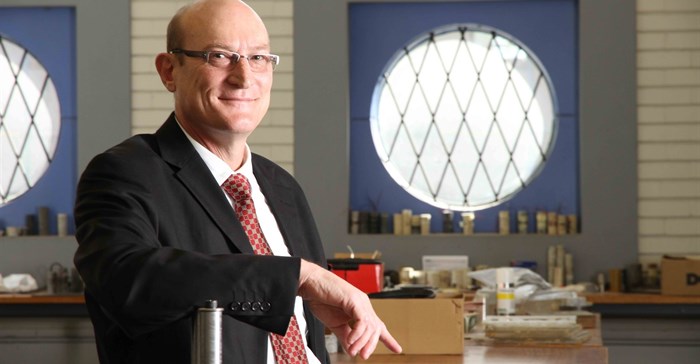
The newly formed Wits Mining Institute (WMI) will be headed up by Professor Fred Cawood, who says, “The institute’s mission is to make mining safer and more sustainable by harnessing fast-developing technologies and practices from different sectors – which are sadly not always incorporated into mining applications quickly enough to address the industry’s many challenges.”
He says the breakthrough that the WMI had made was to forge working links across the university’s schools and research units, so that mining issues could be addressed in an integrated manner.
“It has taken some time to achieve this, but the WMI now draws upon a formidable battery of expertise and insights from disciplines like architecture, public health, law, global change, population migration, urban development, electronics and computer science,” he explains.
“These now augment the already substantial work being done within the School of Mining Engineering through its Centre for Mechanised Mining Systems and the Centre for Sustainability in Mining and Industry.”
South Africa’s deep level ore bodies pose particularly difficult challenges to mining operations, but encouraging progress is already being made to show the path forward for both established and new operations.
“Work on converting ‘indoor’ positioning systems to underground applications is already underway, for instance, paving the way to developing an automated tunnel for mining at depths no longer viable or safe for humans to operate,” says Professor Cawood.
Cutting edge software, sensors and related high-tech infrastructure are allowing developments like real-time underground airflow modelling, and access systems that could automatically exclude personnel restricted by health issues or legal compliance requirements.
“This kind of intervention brings us closer to the concept of the intelligent mine, where the data required for good decisions is available in real time – and in many cases can inform automated responses that removes the risk of human error,” he says. “The vision of safe and more efficient operations is reachable, if we can adapt and apply the remarkable technologies available to us.”
The Wits Mining Institute (WMI) will house the school’s Digital Mine project – already well advanced in developing a mock mine within the Chamber of Mines building on Wits University’s West Campus – and a college network to develop skills at artisan and technician level.
The mock mine currently includes a 67-metre life-size mine tunnel called “Nick’s Tunnel”, a stairwell equipped as a mock vertical shaft, the NCM stope, lamp room and control room – which are used for both teaching and research into aspects such as security, systems integration and video analytics.
Developing the proficiency required to install and maintain the various new technologies being implemented or considered by mechanised and digital mines will be the skills development focus at the institute.
“Mines that are already mechanised find themselves in a difficult position, as last century’s skills are unable to properly manage and advance the modern technologies that they have installed in their operations,” says Cawood.
In addition, the research agenda is significant, with a total of 16 postgraduates who use/used the facility for their research and 10 undergraduate students who will graduate at the end of 2016 with a digital mining competence. The research projects are sponsored by different companies which are partnering with the WMI in its objective to prepare the sector for 21st century mining.
The major funders of the digital mining infrastructure to date are Gold Fields, Aveng Mining, the Minerals and Education Trust Fund, Wits University, New Concept Mining and Sibanye Gold, which is currently the largest sponsor.